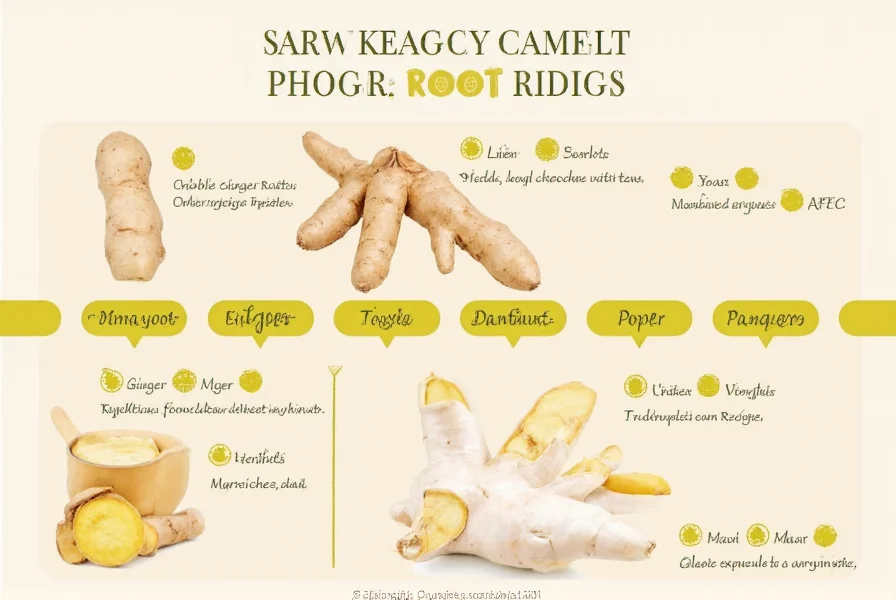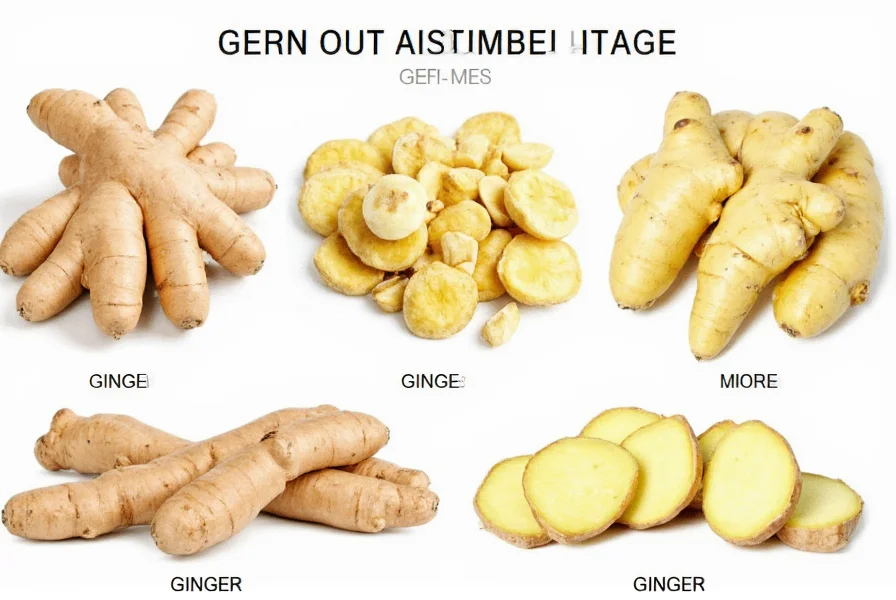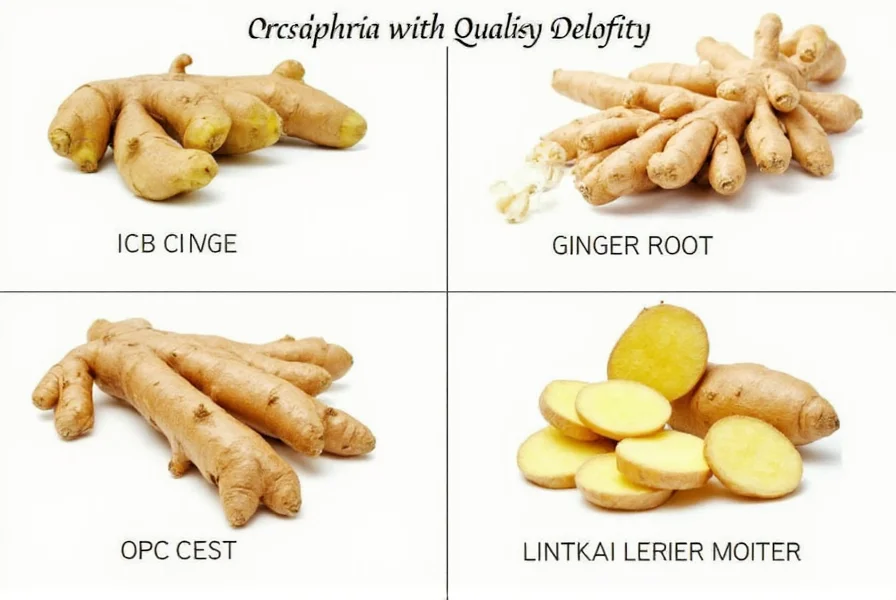If you're searching for ginger images, you're likely looking for visual references of the ginger root (Zingiber officinale) in its various forms. High-quality ginger images typically show fresh ginger root with its characteristic knobby appearance, tan to light brown skin, and pale yellow interior. These visual references help with identification, culinary use, and understanding the different stages and varieties of this popular spice.
When seeking ginger images, it's important to understand the different visual characteristics that distinguish quality ginger from inferior specimens. Fresh ginger root displays a firm texture with smooth, unwrinkled skin and visible growth nodes. The interior should appear moist and vibrant yellow when cut open. These visual cues are essential for cooks, shoppers, and educators who rely on accurate representations to make informed decisions about ginger selection and use.
Understanding Ginger's Visual Characteristics
Ginger (Zingiber officinale) belongs to the Zingiberaceae family and shares visual similarities with its botanical relatives like turmeric and galangal, though distinct differences exist. The most common variety found in grocery stores is Zingiber officinale var. rubrum, characterized by its plump, finger-like rhizomes with smooth, pale brown skin.
When examining ginger images, pay attention to these key visual indicators of quality:
- Surface texture: High-quality ginger shows taut, unwrinkled skin without excessive moisture or shriveling
- Color variation: Fresh specimens display consistent tan to light brown exterior with bright yellow interior
- Moisture content: Properly stored ginger maintains firmness without visible mold or dry patches
- Size and shape: Mature ginger develops distinctive "fingers" or branches from the main rhizome

Different Forms of Ginger and Their Visual Identification
Ginger appears in multiple forms, each with distinctive visual characteristics that help with proper identification:
| Form of Ginger | Visual Characteristics | Common Misidentifications |
|---|---|---|
| Fresh Ginger Root | Knobby rhizomes, tan-brown skin, yellow interior, firm texture | Often confused with galangal (smoother skin, pinkish hue) or turmeric (bright orange interior) |
| Dried Ginger | Shriveled appearance, darker brown color, harder texture | Mistaken for aged or spoiled fresh ginger |
| Ginger Powder | Fine yellow-orange powder, uniform texture | Confused with turmeric powder (brighter yellow) or cinnamon (reddish-brown) |
| Candied Ginger | Translucent pieces coated in sugar, deep amber color | Mistaken for other candied roots or dried fruits |
Practical Applications of Ginger Visual References
Accurate ginger images serve multiple practical purposes across different fields. For culinary professionals, high-resolution ginger photographs help identify optimal freshness for specific cooking techniques. Food photographers benefit from understanding how lighting affects ginger's appearance in different preparations. Educators use ginger images to teach botanical characteristics in plant science curricula.
When selecting ginger images for reference purposes, consider these factors:
- Context: Images showing ginger in soil versus grocery store displays serve different educational purposes
- Scale: Reference points like measuring tools or common objects help understand actual size
- Preparation stages: Images showing whole, sliced, grated, and powdered forms provide comprehensive understanding
- Quality indicators: Side-by-side comparisons of fresh versus deteriorating ginger enhance identification skills

Ethical Considerations for Using Ginger Images
When using ginger images for educational or reference purposes, proper attribution and understanding of usage rights are essential. Many high-quality botanical images come from academic institutions, agricultural extensions, or licensed stock photography services. Always verify the licensing terms before using ginger images in publications, educational materials, or commercial contexts.
For those creating original ginger photography, consider these best practices:
- Capture multiple angles showing both exterior and interior characteristics
- Include scale references for accurate size interpretation
- Photograph ginger in natural lighting to show true color representation
- Document the specific variety when possible (e.g., Jamaican, Indian, or Chinese ginger)
Conclusion
Understanding the visual characteristics of ginger through quality reference images enhances identification skills for culinary, educational, and botanical purposes. By recognizing the distinctive features of fresh ginger root—its knobby texture, tan-brown skin, and vibrant yellow interior—you can make better decisions when selecting this versatile spice. Whether you're a home cook, professional chef, or educator, accurate ginger images provide valuable visual references that support proper identification and usage.
What does fresh ginger root look like in high-quality images?
High-quality images of fresh ginger root show plump, knobby rhizomes with smooth, tan to light brown skin and visible growth nodes. The interior should appear moist and vibrant yellow when cut open. Quality specimens display firm texture without wrinkles, mold, or dry patches, with consistent color throughout the root.
How can I tell the difference between ginger and similar roots in photographs?
In photographs, ginger can be distinguished from similar roots by its pale yellow interior (versus turmeric's bright orange), lack of pinkish hues (unlike galangal), and distinctive knobby texture. Ginger's skin is typically tan-brown rather than the darker brown of mature turmeric. When sliced, ginger shows fibrous strands throughout the interior, while turmeric has a more uniform texture.
What visual signs indicate poor quality ginger in reference images?
Reference images showing poor quality ginger typically display wrinkled or shriveled skin, soft or mushy spots, visible mold growth, or dry, fibrous interiors. Discoloration such as dark brown or black patches, excessive moisture, or sprouting beyond the growth nodes also indicates deterioration. High-quality reference images often include side-by-side comparisons to highlight these negative characteristics.
Why are scale references important in ginger identification images?
Scale references like measuring tools, coins, or common kitchen items provide crucial context for understanding the actual size of ginger specimens in photographs. This helps viewers accurately assess whether the ginger shown is a typical market size or unusually large/small. Scale also aids in identifying specific varieties, as some types like African ginger tend to be larger than Asian varieties.
What lighting conditions best showcase ginger's visual characteristics in photographs?
Natural daylight provides the most accurate representation of ginger's true colors and textures. Photographs taken in diffused natural light best reveal the subtle variations in skin texture and color without harsh shadows. For interior shots, softbox lighting positioned at 45-degree angles creates optimal illumination that highlights the knobby texture while maintaining accurate color representation of both the exterior and interior.











 浙公网安备
33010002000092号
浙公网安备
33010002000092号 浙B2-20120091-4
浙B2-20120091-4